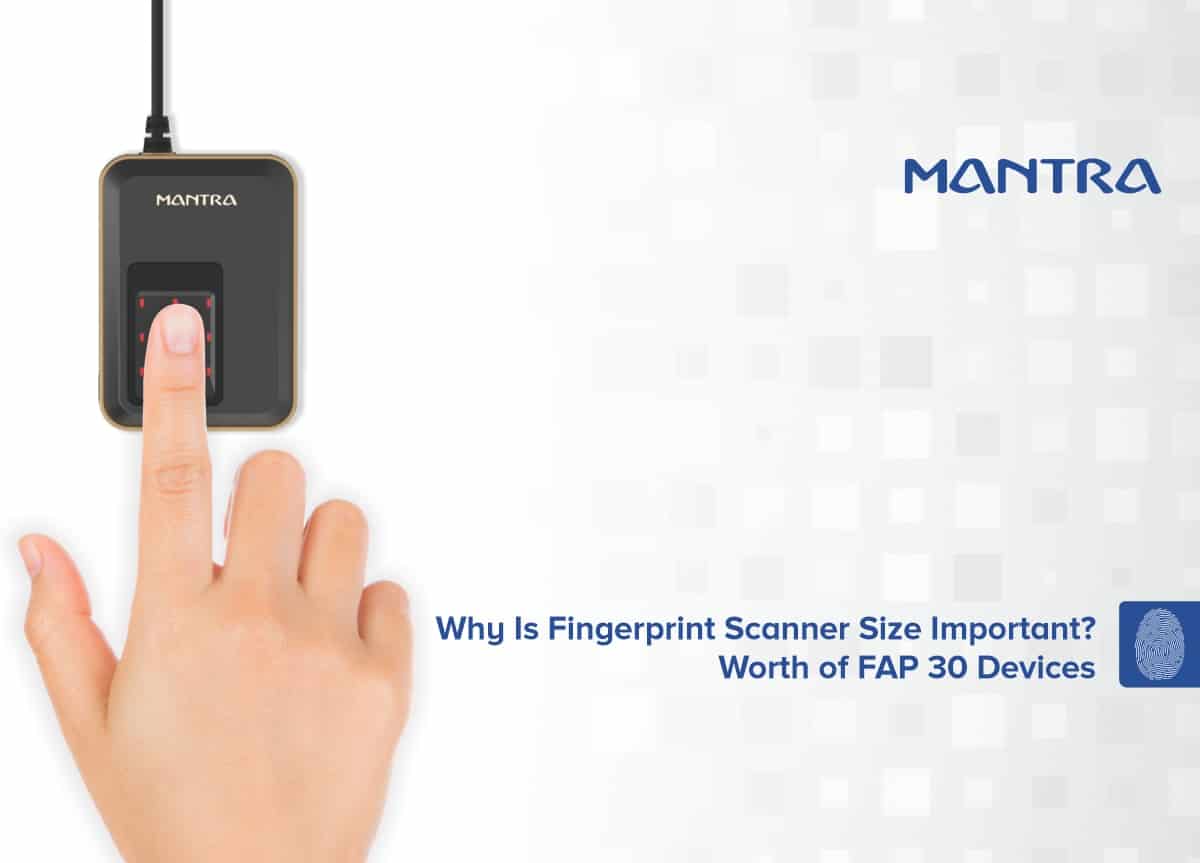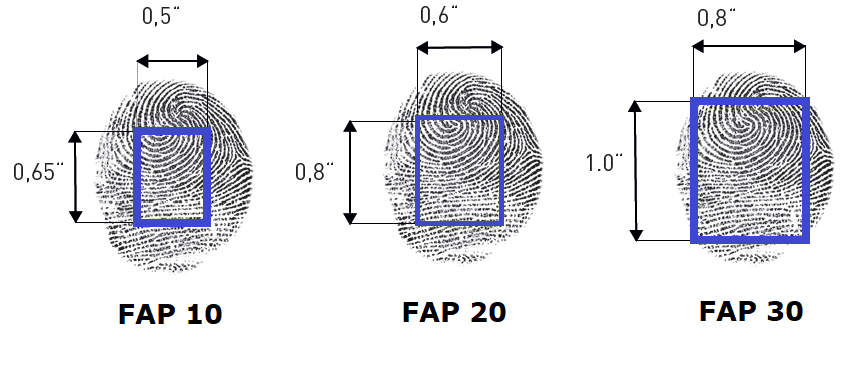
The fingerprint scanner is the most widely used biometric authentication method in mainstream applications. It is the most used biometrics for high throughput applications like KYC purposes, law enforcement, access control, smart cards, banking, etc. These applications employ a few fingerprint scanners to scan the fingerprints of 100s or 1000s of people. It requires high accuracy to distinguish fingerprints quickly. The capture size of the fingerprint is equal to the accuracy of the fingerprint authentication system. Read further to know how.
Capture size is equal to accuracy: Justification.
For personal identification verification (PIV), a fingerprint sensor records and stores an image of a portion of the fingertip. Aside from picture quality and repeatability, image size is important because it is the parameter analyzed to find the match.
People are unlikely to put their fingers in exactly the same position every time. If the capture size of the sensor is small, the sensor only captures a small portion from the overall finger. Later, while authenticating, the same person may use the same finger at a different angle, resulting in authentication failure. That means the same finger (without spoof), but the sensor could read only partial or completely miss the print, which the system cannot authenticate. Inconsistency in fingerprint reading will increase the sensor's FRR (false rejection ratio). The higher FRR will have a negative impact on the seamlessness of applications in day-to-day use. The system restricts users from utilizing access control, banking, or smart cards until the precise position matches.
Only a large capture size can mitigate the issue by reading and comparing large fingerprint areas, including unread portions missed by other scanners. Hence, the scanner can identify the fingerprint scanned in any direction, which helps fast and accurate authentication. Even the scanner can tolerate the unclear parts of the fingerprint image in identification.
FAP30: The market's best device with a larger capture size.
The FAP30 fingerprint scanner offers the largest capture size of any PIV single fingerprint scanner, making it suitable for large-scale deployments. The FBI-recommended scanner (for AFIS) provides excellent matching performance and image quality. Following the FAP 10 & 20 scanners, FAP 30 is specified with the FBI EBTS, PIV-071006 specification. The capture size comparison is as follows:

A slight increase in capture size enhances the information acquired from a fingerprint, which has a greater influence on scanner accuracy. FAP 30 sensors offer data with a minimum of false positives or false negatives. In terms of speed, precision, reliability, size, and affordability, the FAP30 delivers good quality and performance. It's ideal for use in any environment where high security is required, but budgets don't allow for expensive options such as dual Iris scanners or retina scanning units.
Aside from picture quality, FAP 30 helps those with bigger fingers to authenticate more correctly. A larger scanner may be advantageous if a user has a particularly large hand or fingers.
Also read: Need to know how to choose the FAP 30 optical fingerprint reader?
End note
FBI recommends the FAP30 fingerprint scanner for law enforcement applications because of its excellent accuracy and suitability for high throughput applications. From simple single-finger PIVs that meet all of your needs for identity verification and access control measures at whatever level you want them, to advanced multifactor authentication systems that require multiple steps before granting access into certain areas of your organization or personal life!
Netra Mahanand
I want purchase finger print device
Reply